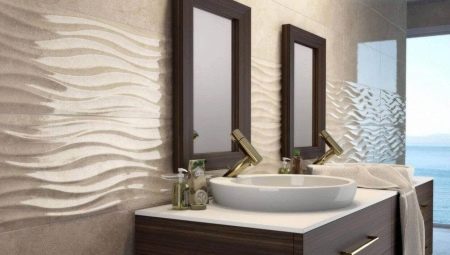If you made repairs at least once, then you thought about decorating the walls with spectacular embossed tiles. With its help, you can create a unique interior of both the internal surfaces of the house and its external cladding. The most classic and common option is laying such tiles in the bathroom. It can be laid out in fragments, making unique wall ornaments part of the interior of the bathroom. From the relief tiles beautiful panels and mosaic masonry are obtained.
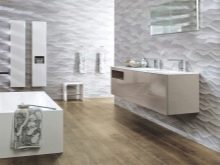
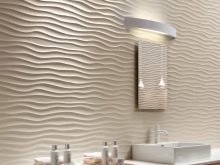

Features of laying embossed tiles
If you are repairing a small bathroom, Do not take large volumetric tiles, as it visually reduces the space. However, small textured decorative elements will help not only to preserve the size of the room, but also to successfully place accents. In the bathroom, a terrain in waves or a terrain with horizontal stripes is very suitable. Wavy lines create a feeling of lightness, "openness" of space.
Do not cover the walls completely with such tiles, as this will significantly reduce the number of places intended for fastening objects.
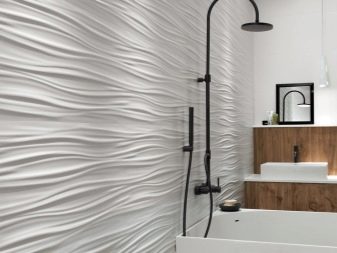
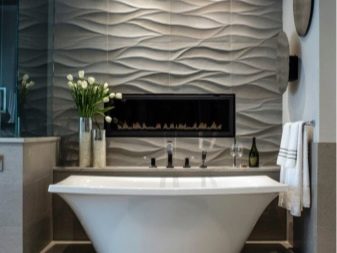


Kinds
Embossed tile most often stylized under the following materials:
- natural stone (Italian, French and Spanish motifs);
- wood (less demanding, but no less expensive alternative to natural wood);
- clay (the most versatile, fits well into almost any interior).
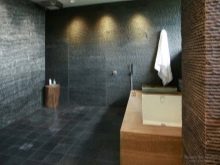

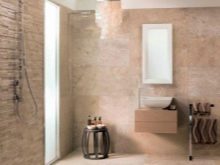
Imitation of 3D effect quickly gained popularity. However, it is worthwhile to carefully choose such a coating, as it may not fit into the overall picture or quickly tire the residents.
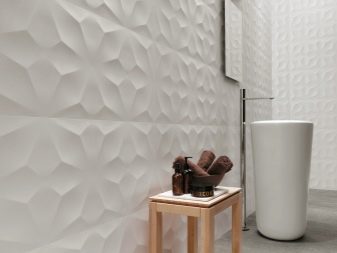

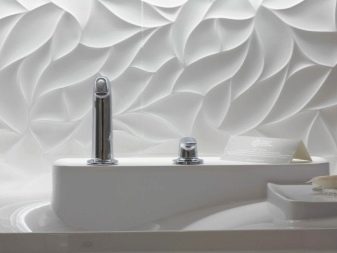
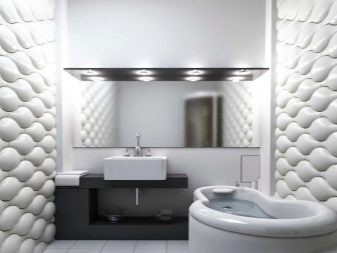
Most often the material is porcelain tile replacing other expensive natural raw materials. The tile may contain folk or geometric ornaments, elements of the plant world, stained glass patterns. The relief itself can be glossy or matte.
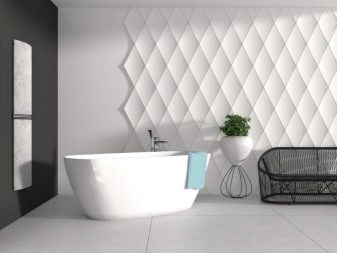
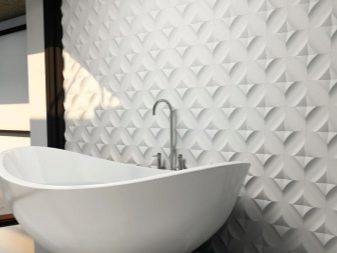
Today, manufacturers can make several similar textures from the same series, which are convenient to combine.
We recommend sketching out its intended location using graph paper or a computer program so that the finished result does not turn out to be too “heavy” and bulky.
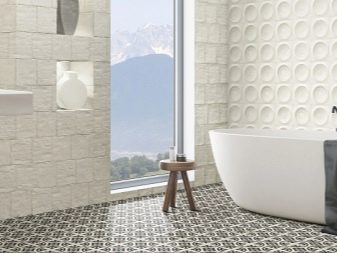
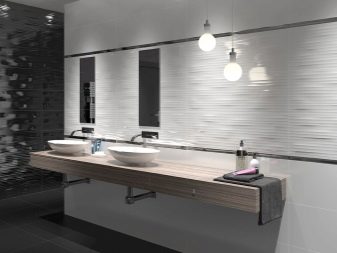
Advantages and disadvantages
Like any building material, embossed tiles have their pros and cons. It is universal, looks good in almost any interior, has many color schemes. Due to high-quality manufacturing technology with careful firing and glazing, it is especially durable and designed for many years of operation.
However, excessive strength can turn into a minus: it will be difficult to attach a heated towel rail, hooks or even attachments to the shower cubicle and wall sink to the wall. Due to the texture between the wall and the subject, a gap may remain.

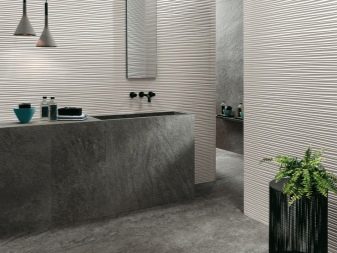
For the price of relief tiles will come out more expensive than usual. In addition, if you decide to save on finishing work and are going to lay it yourself, keep in mind that cropping a single textured pattern is quite difficult.
Tip: choose a certified tile whose pattern will not differ in color and finish. However, small errors often do not serve as an obstacle to purchase, since texture does not always imply identity.
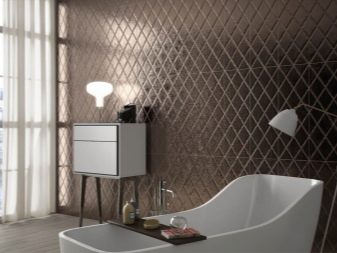
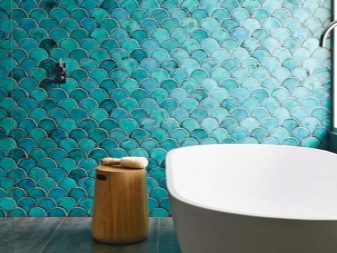
How to care?
Due to the complex texture, embossed tiles require more painstaking care. However, it is somewhat easier to glaze, preventing serious pollution. In addition, in the modern market of household chemicals, a lot of tools for cleaning relief tiles are presented. The most popular brands are “Mr. Muscle,” “Seth,” “Comets,” and “Silite.” We recommend choosing non-abrasive gel and cream products that do not contain scratching particles.
The most vulnerable places are joints and bends. The dirt here accumulates faster and is more difficult to clean. Some manufacturers advise buying special nozzles for a vacuum cleaner or even buying a special washing vacuum cleaner or steam cleaner, however, you can get by with a microfiber cloth or a natural brush. Choose materials with a large pile, they are easier to get to hard to reach places.
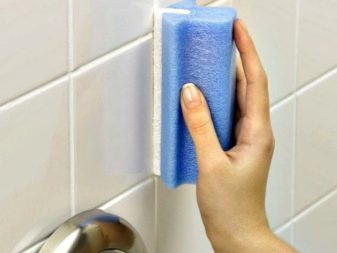
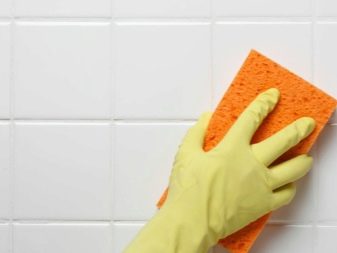
Before washing, pay attention to the class of the tile. Class A models tolerate aggressive cleaning. They are more resistant to strong detergents, while microcracks can easily be left on Class C models.
Use caution with improvised means, such as chlorine, vinegar, and ammonia. The regular use of vinegar and ammonia is likely to provoke the destruction of tile joints.
We do not recommend using household soap for washing tiles.
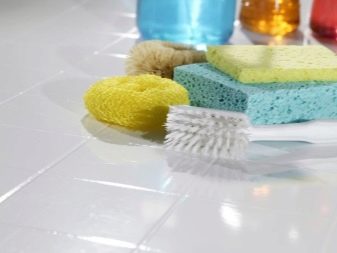

You are presented with the ways and possibilities of laying tiles in your home with your own hands.
